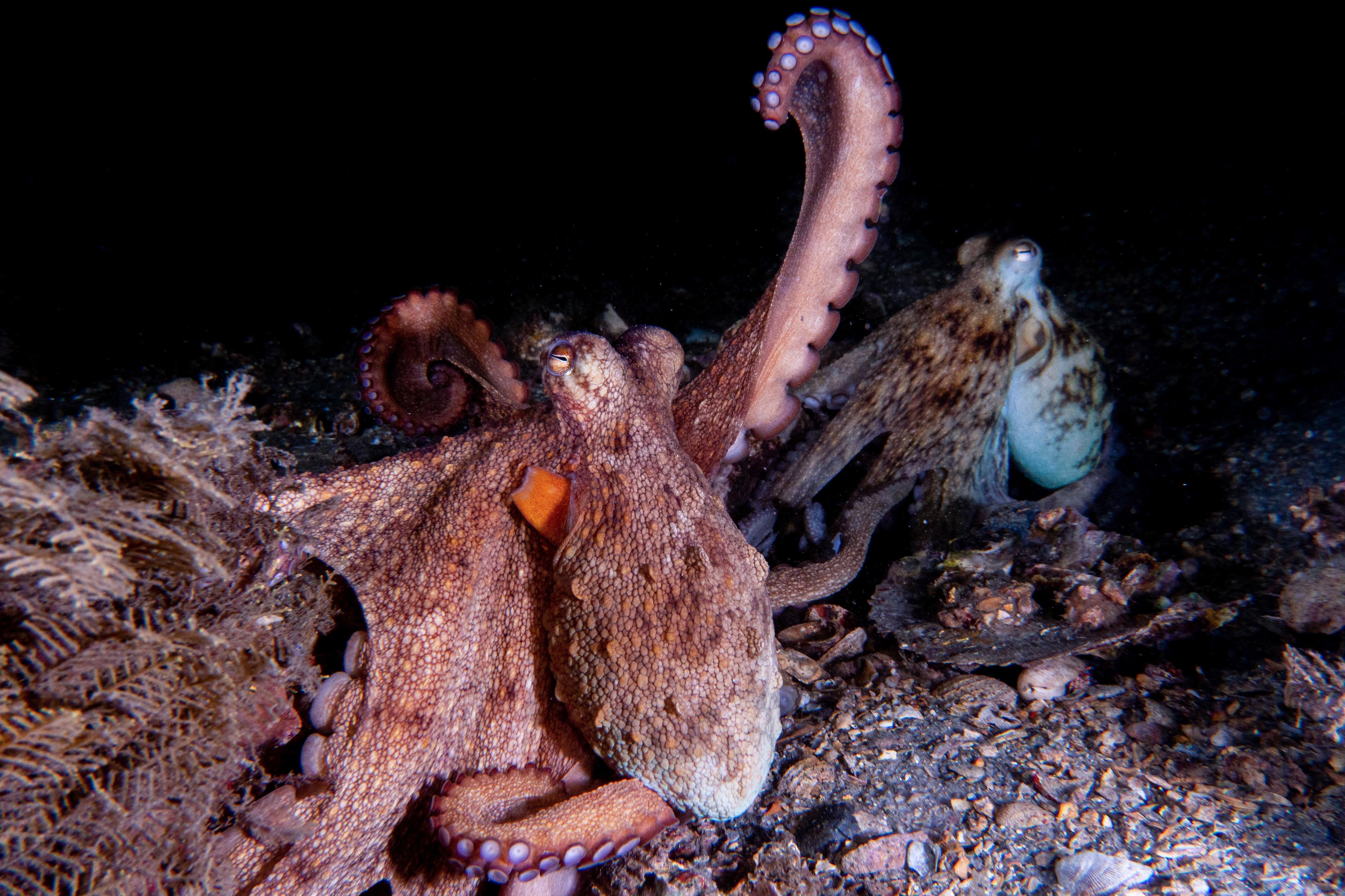Media release
From:
Octopuses can use any of their arms to perform tasks, but tend to use a particular arm, or arms, for specific tasks. This finding, presented in a paper in Scientific Reports, reveals more about the complex behaviour these animals display.
Octopus arms are complex structures consisting of four separate muscle groups — transverse, longitudinal, oblique, and circular — around a central nerve. These four muscle groups allow octopus arms to deform in a wide variety of ways to perform a range of actions used for various behaviours, from hunting and moving, to self-defence. However, little is known about how wild octopuses use and coordinate their arms.
Chelsea Bennice and colleagues analysed 25 one-minute videos of wild octopuses, filmed between 2007 and 2015 in the Atlantic Ocean and Caribbean Sea. The filmed octopuses were either common octopuses (Octopus vulgaris) or from the closely related species Octopus insularis or Octopus americanus. The authors recorded which arms were used each time the octopuses performed one of fifteen distinct behaviours (such as crawling). They also recorded what combination of twelve distinct arm actions (such as curling) took place during the behaviour, and what combination of four distinct deformations (such as elongating) took place to perform each arm action.
The authors found that all the octopuses could deform all eight arms in the four distinct ways, and could perform all of the actions with each arm. They also found that arms on both side of the body are used equally, but that the front four arms are used significantly more often than the rear four arms (64% compared to 36%). The front arms are more likely to be used to explore the surroundings, while the rear arms are more likely to be used to move the octopus around. As a result, two actions are performed more often using the rear arms: roll, in which the arm moves underneath the octopus along the seafloor similar to a conveyor belt; and stilt, in which the arm is extended straight downwards to raise the body.
The authors say that their results are some of the first to show that octopuses use specific limbs for specific tasks — behaviour which is currently only well known in primates, rodents, and fish. They also state that their results could be used to improve robotic arms which mimic the functionality of octopus arms.



 International
International



